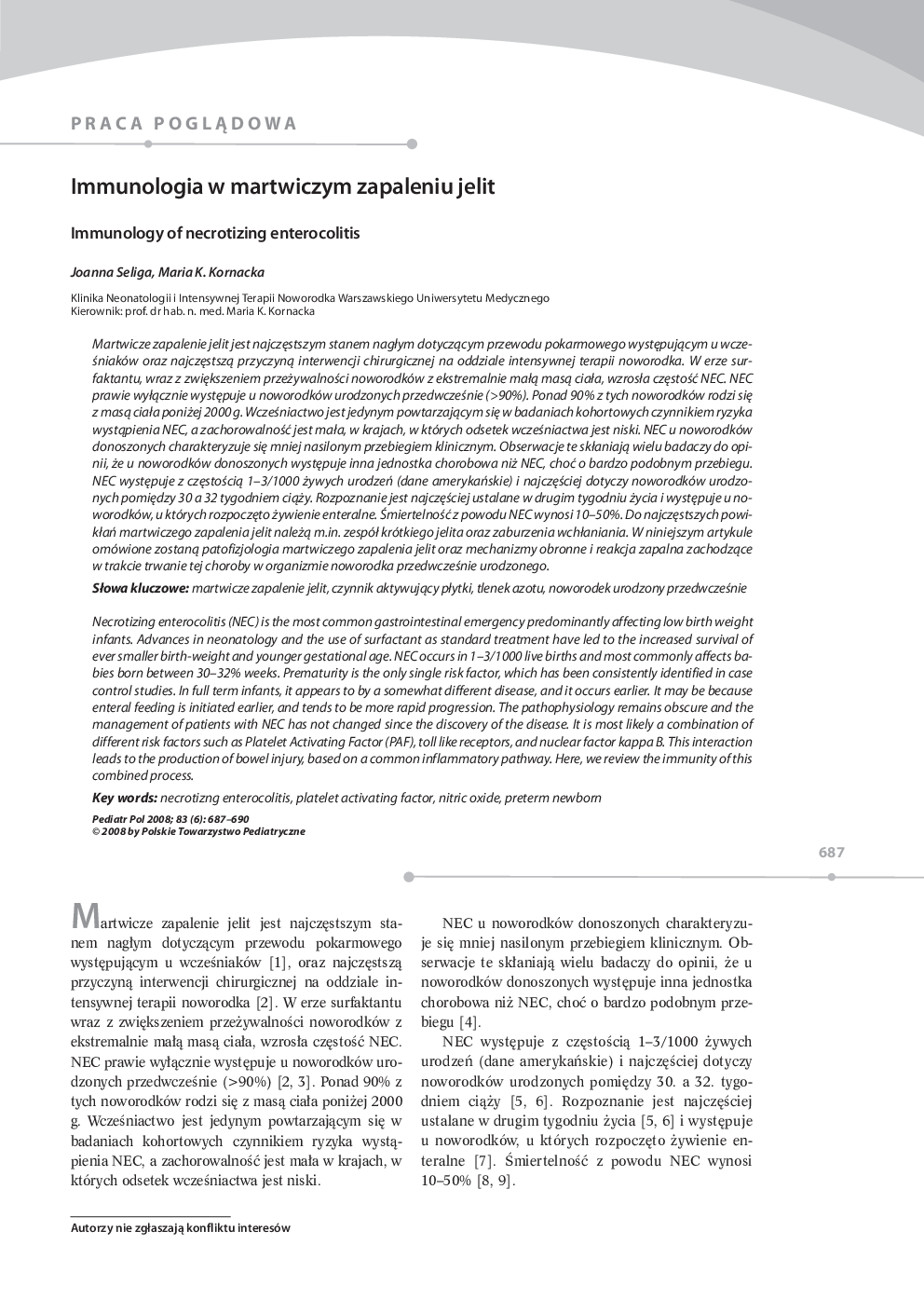| Article ID | Journal | Published Year | Pages | File Type |
|---|---|---|---|---|
| 10163081 | Pediatria Polska | 2008 | 4 Pages |
Abstract
Necrotizing enterocolitis (NEC) is the most common gastrointestinal emergency predominantly affecting low birth weight infants. Advances in neonatology and the use of surfactant as standard treatment have led to the increased survival of ever smaller birth-weight and younger gestational age. NEC occurs in 1-3/1000 live births and most commonly affects babies born between 30-32% weeks. Prematurity is the only single risk factor, which has been consistently identified in case control studies. In full term infants, it appears to by a somewhat different disease, and it occurs earlier. It may be because enteral feeding is initiated earlier, and tends to be more rapid progression. The pathophysiology remains obscure and the management of patients with NEC has not changed since the discovery of the disease. It is most likely a combination of different risk factors such as Platelet Activating Factor (PAF), toll like receptors, and nuclear factor kappa B. This interaction leads to the production of bowel injury, based on a common inflammatory pathway. Here, we review the immunity of this combined process.
Related Topics
Health Sciences
Medicine and Dentistry
Dermatology
Authors
Joanna Seliga, Maria K. Kornacka,
